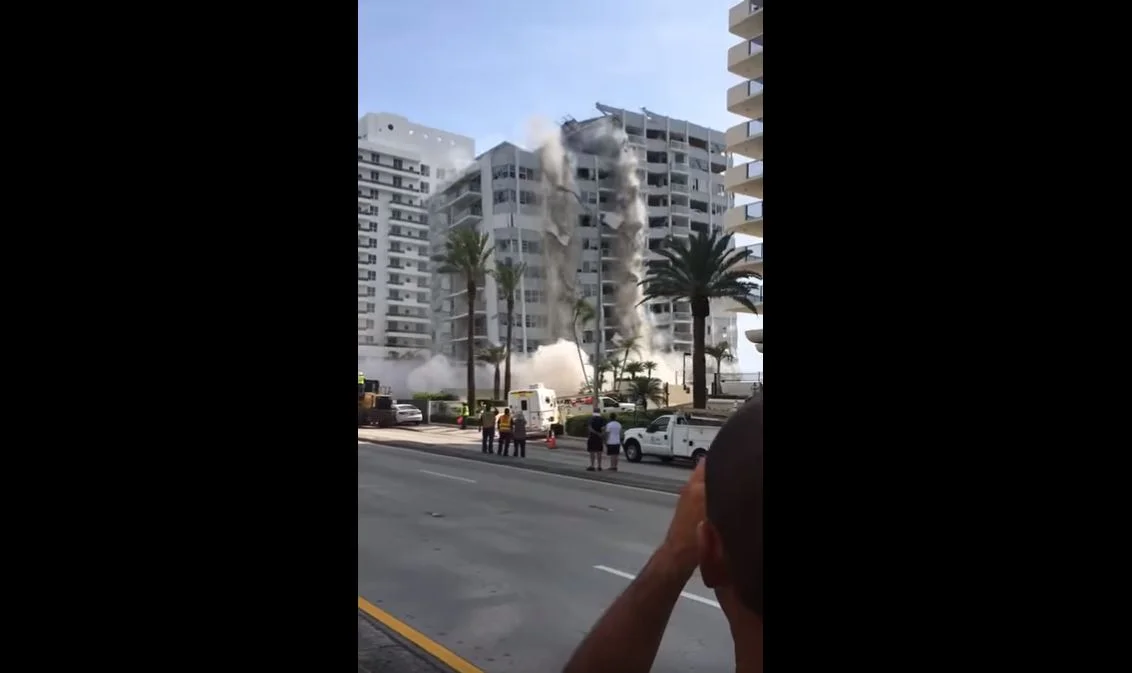Last Monday, a 13-story building in Miami Beach was in the process of being manually demolished when the building suddenly came crashing down, some of it horizontally, and critically injured 1 of the demolition contractor’s project managers. There have been some developments in the story that we would like to update you on.
First, and most importantly, the injured project manager is still fighting for his life after being struck by multiple large pieces of debris as the building fell. At the very least, the man has lost one of his legs as a result, according to the Miami Herald. As of July 25, the man was listed as being in “extremely grave condition,” by the Miami Beach Police Chief.
Late last week, the Miami Herald also reported that two off-duty police officers may have prevented additional injuries as they made the decision to close the roads moments before the building fell. The Herald later amended that article to state that the police officers were actually hired by AlliedBean, the demolition subcontractor for the project, and their role was to decide when to close the roads.
Details about how the building was planned to be demolished are still pretty vague, but after a review of AlliedBean’s website, it appears that they have performed a non-explosive “implosion” type demolition in the recent past. Instead of using explosives, the group hollowed out the interior of a building, weakened the structural supports, and allowed the building to fall in on top of itself. That’s not to say that was the same plan they had with the latest Miami Beach building, but could lend some insight into their general philosophy. As a reminder, the city declined their initial permit application for “demolition by implosion” and only granted the group a “general demolition permit.” The contractors weren’t required to give the city any additional information after receiving the permit.
These loose demolition requirements have since inspired Miami Beach Commissioner Michael Gongora to try to strengthen the city’s requirements on future demolitions, according to Re: Miami Beach. Gongora wants to see tighter demolition regulations in 3 areas:
- Require the contractor to notify the city how an when a demolition will take place
- Better notices given to neighboring buildings
- Create guidelines for safe distances workers and public should remain away from a falling building
We recently spoke with Miami Construction Attorney Alex Barthet, author of www.TheLienZone.com, to give us his opinion of the incident. “What I find most puzzling is why so many folks were standing with their cellphone cameras trained on the building – it is as if they were expecting it to come down in the following moments. If so, then this may have been a planned non-explosive implosion that went wrong.” Alex went on to say “either way, this accident and the recent FIU bridge collapse are reminders that construction is a very dangerous business and every precaution needs to be taken to protect workers and bystanders.”
As for potential legal liability, Alex believes that “any insured workers’ recovery will likely be limited to Work Comp benefits. However AlliedBean, WinMar, and possibly others can expect claims against them and their carriers by any injured bystanders, the developer who’s project is likely stopped for some time, and neighboring building and business owners for both physical damage to their premises and economic damage to their business. If this and the FIU incident aren’t wakeup calls to tighten up your safety and risk management procedures, I don’t know what more a construction professional needs to see.”











Last summer, Hilti announced that they had developed their first exoskeleton designed for construction tradespeople in a partnership with Ottobuck, a prosthetics, orthotics, and exoskeleton provider. Earlier this month, Hilti officially released the exoskeleton, announced more details, and published its retail price on their website.